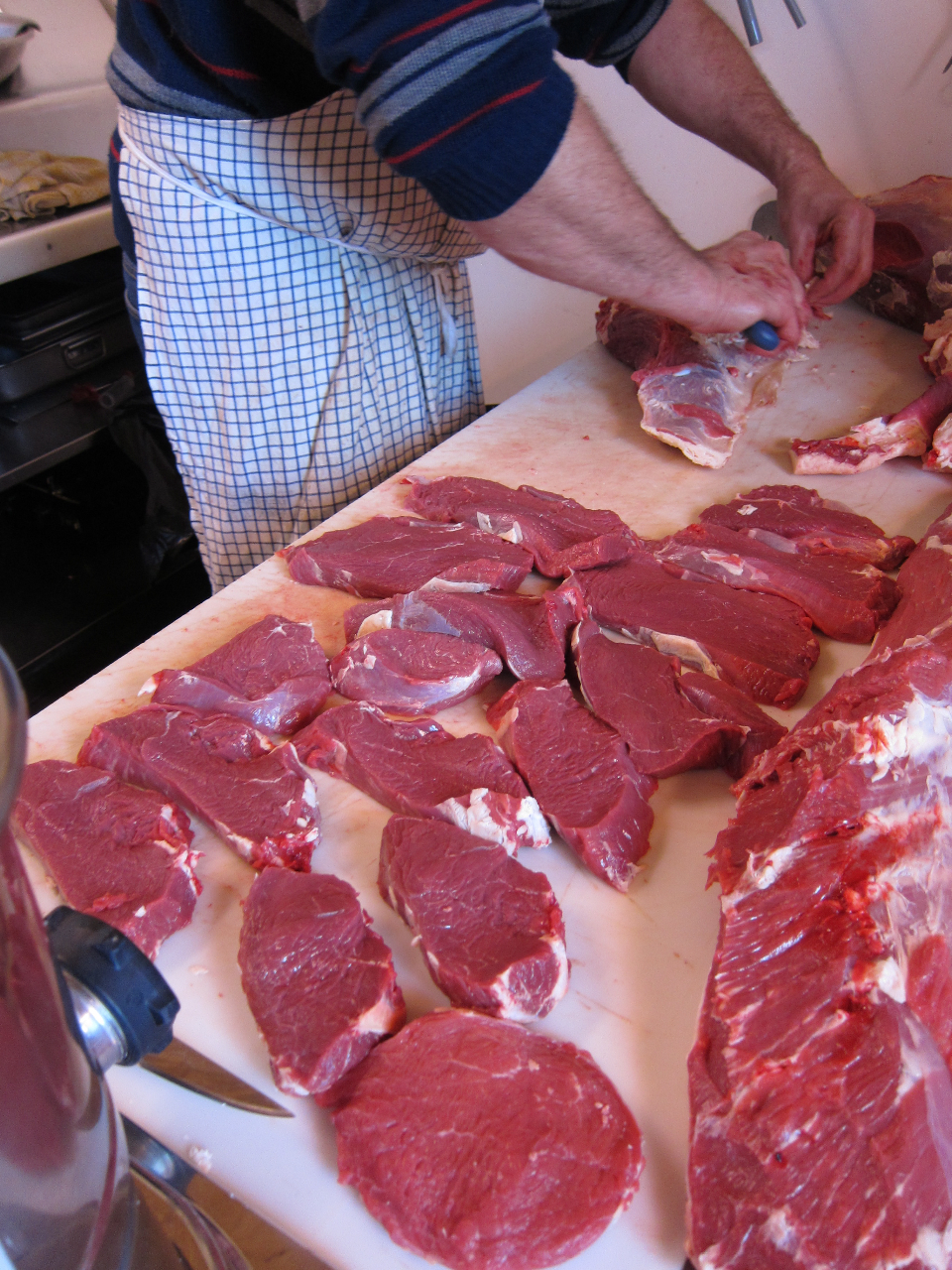Are we cutting ourselves short? Summer 2015
/Meat cutting courses may once again be added to the curriculum at Nova Scotia’s Agricultural College in Bible Hill, now part of Dalhousie University, if survey returns show there is enough interest. There is much to be learned. Here, Fleischermeister Dieter Maier, West LaHave, N.S., demonstrates one way to cut more profit from beef, in this example by isolating shoulder muscles that can be sliced into valuable boneless steaks (inset). (ABS photos)
Are we cutting ourselves short?
The need for good butchers
There was a time in living memory when a meat cutting course was regularly offered at the old Nova Scotia Agricultural College (now Dal Faculty of Agriculture). For many years, the course was taught by John Avery. It was well attended and jobs awaited graduates at grocery stores throughout the region. “Boxed beef” pretty well put an end to that. No longer were stores receiving sides and quarters, let alone whole carcasses of chicken, lamb, pork, or beef. It came from abattoirs ready-cut.
Sadder still, we’d built an impressive meat cutting lab as part of the new Haley Institute on the AC campus in Bible Hill. It is a multi-room facility that’s largely sat idle for more than a decade. But this could be about to change.
Today, while supermarkets continue to import ready-cut meats (seldom locally grown), there is demand for carefully cut and packaged meats for farmers raising beef, sheep, and hogs locally for the farm market and custom meats trade. Grass-fed, natural, and certified organic meats are often sold at a premium, and to discerning consumers who are not happy when a steak or chop is an inch thick on one end and a half inch at the other.
There is so much more to proper butchering than is reflected in the old idea, “it all ends up the same place.” Consumers paying eight, 10, and more dollars a pound for their meat can be fussy. Another thing to consider is the potential to sell more pounds for top prices through improved cutting practices – as was demonstrated to us a couple of years ago when retired Fleischermeister Dieter Maier from West LaHave, N.S., boned out one of our steers. He used knives only, no bandsaw, to separate muscle groups into higher value steaks and roasts, achieving at least a 30 percent higher retail value on the whole beef carcass.
Says Maier, “This cutting method has been used by the big North American meat packers for at least 25 years, but has been missed by small local butcher shops due to the non existence of meat cutting courses or apprenticeships in the meat business.
Word that a meat cutting and processing course might return to the AC has been enthusiastically received. It would happen thanks to efforts of a team led by Extended Learning Program Manager Ashley Coffin who earlier this spring took to social media to ask if there was interest in such a course. The response was quick and positive.
But who wants to take that course, and why, when, and would they be willing to pay? If so, how much? These questions and more, 10 in all, are asked in a survey that has now been posted on-line at https://surveys.dal.ca/opinio/s?s=28441.
Margie Hartling, an instructor and nutrition lab supervisor, walked us through the impressive meat cutting and processing facilities at the Haley Institute in early May. There is a room for breaking down carcasses, there are walk-in coolers and freezers, a smoker, machines for making sausages and hot dogs, a kitchen lab for learning how to process meats into all manner of cold cuts, and a large amphitheater. A side of beef can be delivered through a door to the outside, hung on a rail, and from there trolleyed throughout.
It’s all there. The only thing missing was students. DvL



















